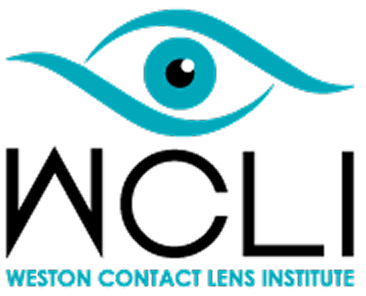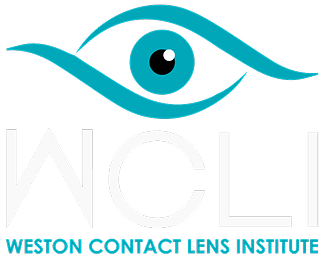Living with keratoconus can be challenging due to blurred vision, distortion, and discomfort that make day-to-day tasks more difficult. Unfortunately, many patients also experience dry eye, which can exacerbate irritation and further affect visual clarity.When keratoconus and dry eye collide, patients face symptoms that require a thoughtful approach that considers the interaction between keratoconus and dry eye. Discover more about the treatment options available for dry eye and keratoconus in today’s blog.
How Do Dry Eye and Keratoconus Interact?
Keratoconus is a condition in which the cornea gradually becomes thinner and bulges outward. Bulging corneas lead to symptoms like cloudy, blurred, and distorted vision. Patients with keratoconus often experience increased light sensitivity and frequent changes in their eyeglass prescription due to progressive visual distortion.Due to the bulging caused by Keratoconus, the corneal surface becomes irregular. Advanced Keratoconus can also cause corneal scarring. Even tear film distribution across the ocular surface is critical for maintaining adequate moisture levels in the eyes. When the cornea is misshapen or scarred, tear distribution is uneven, leading to dry eye.There are two main types of dry eye: aqueous-deficient and evaporative. Keratoconus patients have a higher risk of developing mild to severe dry eye because of tear film instability and increased tear evaporation. Partnering with a specialist at Weston Contact Lens Institute can help you better understand your condition and explore the most effective treatment options personalized for you.Dry eye often causes symptoms like stinging, burning, redness, and blurred vision. For patients with keratoconus, these symptoms can make wearing contact lenses even more challenging. Combined with frequent changes in eyeglass prescriptions, many individuals struggle to achieve clear, comfortable vision. This reduction in visual quality can impact work, hobbies, and overall quality of life. That’s why it’s essential to address both keratoconus and dry eye together when developing an effective treatment plan.
Why Is a Dual-Strategy Treatment Plan Necessary?
Keratoconus and dry eye have many overlapping symptoms, making it challenging for patients to determine whether they have one or the other. If you believe you have Keratoconus or dry eyes, it is vital to see an optometrist for a thorough examination. Detailed imaging and experience will allow your doctor to accurately diagnose you and develop a treatment plan.When managing Keratoconus and dry eye simultaneously, eyecare practitioners use a dual-strategy approach to minimize the effects of both conditions. These conditions must be addressed simultaneously to mitigate the ocular surface damage caused by Keratoconus and reduce the discomfort caused by dry eye. There are several treatment options available that can be used together or as a standalone solution to both conditions.
What Are the Treatment Options for Keratoconus-Related Dry Eye?
Effectively managing dry eye in patients with keratoconus requires a careful balance of tear film quality and ocular surface health. Before recommending any treatment, we take the time to perform a thorough evaluation to fully understand the underlying causes of your symptoms. This comprehensive approach allows us to create a personalized plan that not only relieves discomfort but also supports long-term eye health and visual clarity.Scleral lenses are one treatment option that can be beneficial for dry eye and keratoconus symptoms due to their exceptional design. Unlike traditional soft contacts, scleral lenses rest on the sclera instead of the cornea. Scleral lenses vault over the irregular cornea and rest on the less sensitive sclera, creating a smooth, protective surface that shields the cornea from mechanical irritation and environmental exposure. The fluid reservoir beneath the lens also keeps the eye continuously hydrated, providing both visual clarity and comfort, especially for patients with keratoconus or dry eye disease.In addition, the posterior space created between the cornea and the scleral lens is filled with a saline solution. The constant presence of the fluid keeps the ocular surface moist and eliminates much of the discomfort caused by dry eye. While scleral lenses can offer transformative relief for many patients, they may not be the right solution for everyone. We begin with a personalized evaluation to determine the best course of action which may include treatments like preservative-free artificial tears, prescription eye drops, or other advanced therapies to improve ocular surface health before considering specialty lenses.For patients with severe dry eye, we take a comprehensive, layered approach that goes well beyond basic therapies. In addition to treatments like punctal plugs to reduce tear drainage, we may recommend in-office procedures such as thermal pulsation, intense pulsed light (IPL), or amniotic membrane therapy to address inflammation and restore ocular surface health. At-home care remains important, including warm compresses, lid hygiene, and nutritional support with omega-3 fatty acids, but these are often combined with prescription medications or biologic therapies to manage underlying causes and provide long-term relief. Each treatment plan is tailored to your specific needs and the root cause of your symptoms.
A Unified Approach to Keratoconus and Dry Eye Treatment
Effectively managing keratoconus and dry eye requires a personalized approach customized to your unique case. Understanding how these two conditions interact is key to finding the right treatment and communicating your symptoms clearly. By working closely with a specialist, you can explore a range of solutions, from targeted eye drops to advanced contact lenses, designed to enhance both comfort and visual quality, helping you live with greater ease and confidence.If you are a keratoconus patient experiencing dry eye symptoms, contact the Weston Contact Lens Institute to schedule a consultation. Our expert eyecare practitioners will examine your eyes, discuss your symptoms, and develop a comprehensive strategy to manage both conditions together.





